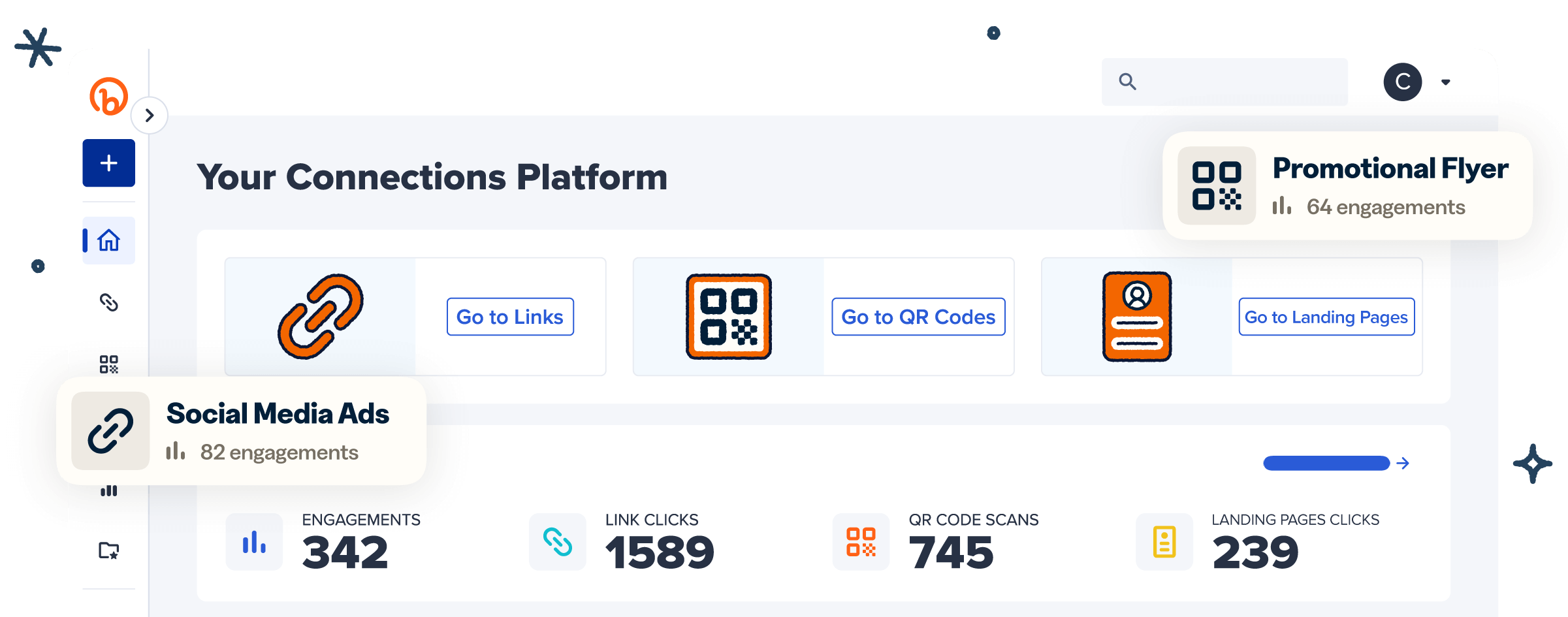Think of all the work that goes into messaging for people outside your company. There are strategy meetings, budgets, and entire departments devoted to that kind of communication.
Comparatively, companies tend to neglect internal communications. Most companies think that internal comms will take care of themselves.
But that’s not always the case—especially for remote workers, hybrid companies, or new businesses where the company culture is just getting started.
A lack of effective internal communication can seriously impact your business. Decreased productivity, information silos, and disengaged employees all lead in the same direction: poor performance.
Find out how to close communication gaps and empower your team with internal communications tools and strategies.
How to spot internal communication issues in an organization
Internal communications are vital for every employee and task in your business. From onboarding to company culture, project management to brand consistency, internal comms are how you keep everyone in sync.
But how effective is your internal communication?
Every year, 34 billion work emails go straight to the trash without the employee reading them—including business-critical communications. That matters more than ever now that getting a co-worker’s attention isn’t as simple as tapping their shoulder at their desk. More and more teams rely on remote communications like email, chat, and task management apps to stay in touch.
Here’s how to spot gaps in your internal communication methods. If any of these problems sound familiar, then it’s time to work on your internal communications plan.
Frequent misunderstandings
Employee X didn’t do a task because they assumed employee Y was doing it. Employee Y thought it wasn’t a priority, and Employee Z just noticed that they never sent the email reminder about it. Meanwhile, Manager A wants to know why you’re focusing on that task instead of something else.
Confusion about project goals, company policies, instructions, and deadlines can all be signs of a bottleneck in your internal comms.
Low morale
Without good internal communication, people can feel frozen out, undervalued, and disempowered. If you notice low morale in your team, it may be because they’re not getting the communication they need.
Sharing information and having an open door for two-way communication can play a significant role in incentivizing employees.
Lack of alignment on projects
Being fully aligned on a project means that everyone knows what they’re doing, why they’re doing it, and how to make it a success.
But a lack of internal communication can leave people with unclear responsibilities, conflicting priorities, and different expectations. If you have a project that misfires or ends in confusion, then it could be an internal comms issue.
Poor employee engagement
Employee engagement is subtly different from employee morale. High morale means a cheerful, friendly work environment. High engagement means committed workers who contribute new ideas, root for each other’s projects, and go the extra mile.
At the other end of the spectrum, poor employee engagement could mean lower satisfaction rates, staff retention, efficiency, and health and safety at work.
11 tips for building an internal communication strategy that works
If you want to improve internal comms in your company, it starts with a strategy. You can’t simply wish better comms into existence.
You’ll need top-down initiatives to take the lead, plus opportunities to get employees involved at every level.
1. Establish clear communication goals
Like any other project, the first step is to define your goals—with meaningful metrics so that you can see your progress.
Think about the different communication channels that you use at work, from face-to-face chats to email, intranet, phone, and messaging apps such as Slack. You’ll need to create communication best practices for each channel.
It’s also a good idea to clarify which channels are best for different types of messages. For example, quick one-on-one check-ins will cover some tasks, while it’s best to share project details and requirements in writing.
2. Foster a company culture of open communication
To communicate effectively, people need to feel confident in speaking up. From business leaders to employees on the frontline of customer service, everyone should have a way to make their voice heard.
Creating this kind of environment takes a mix of tools and attitudes.
For example, anonymous surveys can be a helpful way to gather employee feedback. But managers also need to actively foster a culture of constructive criticism without retaliation so that people can offer opinions one-on-one as well.
Transparency from business leaders goes a long way, too. Company-wide updates, all-hands meetings, and town halls create opportunities to inform and engage everyone.
3. Communicate leadership messages effectively
Messages from senior staff can convey the company’s vision, goals, and strategy. Armed with that knowledge, employees can be more effective and motivated in their individual roles.
You’ll need to think about the best way to share those messages in your specific business. For example, will regular emails do the trick, or would webinars about the company strategy have more of an impact?
It’s important that everyone can recognize messages from senior leadership and trust the information. One method is to use branded links.
For example, if the CEO wants everyone to read a particular whitepaper, they can send it out using a custom short link that makes it clear the message is straight from the CEO’s desk.
4. Enhance team collaboration opportunities
If you want your team to communicate better, then you need to give them opportunities to communicate.
- Organize team-building activities so that everyone knows each other and can interact confidently.
- Add collaboration tools to your tech stack so employees get used to communicating throughout their work.
- Hold regular meetings or update sessions so that everyone is in touch with the company’s strategy instead of zooming in on their own tasks.
5. Maintain consistency in your internal comms resource libraries
Internal comms resources are the materials that guide everyone through best practices: brand guidelines, employee handbooks, training materials for new employees, email templates, and more.
Review and update comms resources at regular intervals. You’ll need a way to make sure that everyone is using the latest version. Consider using a link management tool, like Bitly, which will let you share custom links, update their content in real time, and measure how employees engage with the resources.
6. Streamline the way you share information
Communication isn’t just about putting information out there. Good internal comms means sharing information in the right places, with the right people, and making sure they can refer to it whenever they need.
Think about:
- Which communication channels and formats are best for different types of information.
- How you’ll update information and send notifications about new resources.
- How you’ll make sure that information stays live for as long as it’s needed.
- How to label information so that the right people access it.
Custom links are just one of the tools you can use for internal knowledge sharing. You can customize each link so that it’s clear what the content is and where it comes from.
7. Enhance recruitment with targeted job postings
Recruitment is one of the biggest challenges facing businesses today. Surprisingly, internal comms might be the key to your hiring problems.
Targeted internal job postings can help find talent that’s hidden in your workforce already. And when employees are motivated to share job postings, they can help you connect with more people—and serve as positive advocates for the company.
You can use tools such as trackable links to figure out where your job postings are most effective and which get the most engagement. You can also issue employees custom links for sharing job ads so you can see who your most effective advocates are.
8. Boost company intranet usage and engagement
If you have a company intranet, it’s the obvious place to start with internal comms. However, getting your employees to use the company intranet consistently can be difficult.
It’s good practice for HR and leadership teams to point to the intranet in internal communications whenever possible. With trackable Bitly links, teams can see how many employees are clicking through and which resources are most popular.
Another way to encourage adoption is by making the intranet easy to use—and regularly updating it so users have a reason to come back.
9. Address any obvious communication gaps
If any of the problems at the start of this article sounded familiar, then you might already know where the communication gaps are in your business. Maybe different departments aren’t good at talking to each other. Perhaps senior leaders struggle to share updates with frontline employees.
Identifying communication gaps is half the battle. Once you know where they are, you can set up cross-functional teams or organize events to get people talking.
10. Train and develop for better communication
None of us are perfect communicators. There’s always something to improve—from internal comms to inclusive language, accessibility, or getting a grip on new branding guidelines. As people progress through their careers, their training needs will change, too.
Make communication training available for employees at every level of your company. Look for formats that will jive with their work style (in-person, hybrid, or remote) and different learning styles (for example, seminars, webinars, or online courses).
11. Share internal event information with all necessary team members
Keeping everyone in the loop on internal events makes it more likely that people will show up and engage. That’s even more important for large businesses or remote companies, where people need time to prepare.
Workplace experience teams can use Bitly to inform employees of upcoming events and activities. With Bitly, you can easily add UTM parameters to send unique links to different teams. This allows them to track clicks by team and follow up with the teams with low engagement.
Take action to improve internal communications today
If your team is disorganized, disengaged, or struggling to reach targets, that could be a sign of poor internal communication. The good news is that some comms strategies and tools can help.
Building an internal comms strategy takes time. But with the right support and buy-in from all levels of a business, you’ll see tremendous results.
With Bitly’s link management tools, it’s easy to create consistent communications to share information throughout your company—and see how employees interact with your communications!
Ready to give your internal information-sharing a makeover? Get started with Bitly for free!




